The monastery of Holy Cross (Timios Stavros) in Vosako is built in a small plateau between the peaks Koutroulis and Mesokofinas of the Talean Mountains, 50km east of Rethymno. The monastery can be accessed by car via the village Doxaro and the rough landscape is amazing. There is a second road starting from Sisses village.
Vossako name comes from the abbreviation of the Greek words vous (buff) and sakos (fold) and means cattle pen, as the plateau probably was used for feeding cattle.
The monastery is built like a fortress and the main temple (Katholiko) is dedicated to the Holy Cross. When the monastery celebrates, pilgrims walk to the monastery along a rough path starting from Kalo Horafi, near Panagia Charakiani in Bali (2-3 hours).
Till the late 20th century, the monastery was completely deserted and ruined, but today it has been restored and is operates normally. The buildings are located on two levels with two courtyards. The main temple is built in the south courtyard. Outside the temple stands a beautiful Venetian fountain, while the main entrance is imposing.
The monastery played an important revolutionary role against the Turks, so it was twice destroyed by them.
Timeline
- 1195: The first church of the monastery is built, which does not currently exist.
- 1630: A large monastery is built around the temple.
- 1646: During the advance of the Turks to Heraklion, they plunder the monasteries of Vosako and Agii Pateres in Kalo Horafi. The monks of Agii Pateres Monastery settle in Vosako so as to avoid future attacks.
- 1673: The fountain of the monastery is constructed.
- 1676: The monastery is declared stavropegic, i.e. directly managed and protected by the Patriarchate.
- 1740: The convent no longer operates under the protection of the Patriarchate.
- 1790: The monastery becomes stavropegic again.
- 1821: The Turks slaughter 18 monks in the position Fidalonia and plunder the monastery. The only two survivors, the monks Anthimos and Melchizedek, restore the monastery.
- 1855: Today’s church is built on the site of the older one.
- 1866: The monk Melchizedek Vardiampasis forms a revolutionary group and takes part in the revolution of 1866-69. Vosako houses the Greek colonel Panos Koroneos, who was the general leader of the revolution.
- 1867: Vosako houses Maniots volunteers who landed in Kala Horafia and take part in the revolution. After the battle of Tylissos, Resit Pasha destroys Vosako.
- 1868: The monasteries of Vosako and Attali (near Bali) host women awaiting ships to transport them to free Greece.
- 1874: The monastery of Halepa becomes a dependency of Vosako.
- 1878: Melchizedek is elected as the representative of the county.
- 1885: The monastery is fully reconstructed, as indicated by the inscription on the frontispiece of the church of the Holy Cross.
- 1900: The monastery is declared as about to stop operating, such as dozens of monasteries in Crete, but it still operates normally.
- 1935: The monastery is declared preservable.
- 1955: The last monks die and the monastery gets completely deserted and ruined.
- 1998: The restoration of the Monastery starts.
What is near me?










 Vossako Monastery
Vossako Monastery







































































